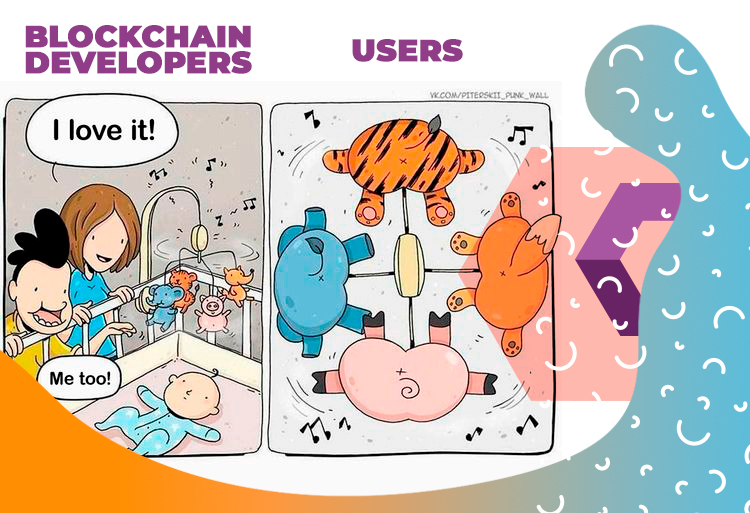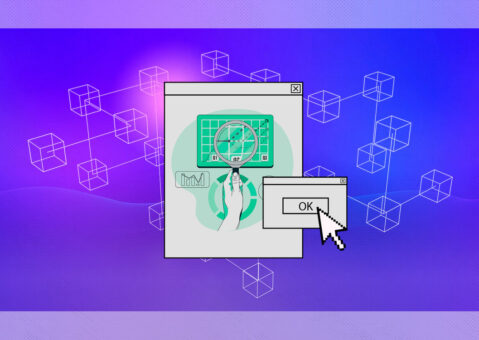
The lack of design principles of blockchain projects is alarming, it is full of shortcomings in user experiences.
So here we are, ten years after the Satoshi paper, a few years after the hype around the technology that would revolutionize the internet as we know it. Blockchain will change the world! – they said – it is decentralized, free software and autonomous by-design technology. Goodbye banks!. Everybody was talking about how the Blockchain is trustworthy and transparent. It is almost certainly true at a programmatic level, but these assumptions fall apart when we confront them with current user experience.
While it is true that it is still a relatively new technology, the lack of design principles that exist in different projects is alarming, it is full of shortcomings in user experiences.
The lack of Design Culture
Human-centered design (HCD) principles can help communities attract and retain people and can make a project flourish or break it. But the topics of UX design and customer experience seem to be at the bottom of the priority list for most distributed ledger technology (DTL) projects.
HCD provides a unique chance to design together with communities, understanding the people our project is aimed towards. Lots of ideas are generated to make innovative new products rooted in people’s actual needs. We can use this methodology to improve blockchain’s major pain points.
Blockchain is not an easy issue to explain, and if services using it want to be adopted by a mainstream audience, it is vital to offer an easy starting point for newcomers, as well as an enjoyable experience over the course of its use. To adopt a new technology, users need to have strong motivation, and be able to foresee its perceived usefulness and ease of use. Four major issues must be improved for mass adoption: the motivation to change, the onboarding challenge, the usability problem and passwords.
Motivating people
A non-technological grandfather can learn how to use whatsapp to see photos and videos of his granddaughter. People need to perceive the advantage to learn something new. What might be the motivation to change from centralized web services to decentralized ones? Users normally feel comfortable with traditional web services, so the motivation could be that data remain in the user’s control . The aim is to provide an easy-to-use interface for anyone to access, own and manage their digital lives in a decentralized web.

The onboarding challenge
We need to focus on learnability. For someone just getting started, the amount of time and frustration before finding what they are looking for can result in an abandonment of their original objective as a result.
A good idea is to incorporate journalists into our teams and user experience writers, whose aim should be to provide a good explanation of processes and create specific tutorials for new users. The onboarding process must be clearer, giving people the information they need, making it as similar as possible to traditional services. Nice graphics and simple text can help a lot too.
“
Four major issues must be improved for mass adoption: the motivation to change, the onboarding challenge, the usability problem and passwords.
Focus on usability
The problem boils down to a matter of there having been very few interaction designers and user researchers working in the field up until now. There is an army of developers working in DTL technologies and focusing on functionality and stability. Of course this is necessary, but the result is a lot of confusing interfaces, full of functionalities that make users’ minds explode. Make it simple, focusing on one thing at a time. Using web standards could be a good way to approach it as well.
Troublesome Passwords
As a primary problem we need to talk about password management. We humans are overwhelmed by today’s security requirements. When we talk about blockchain passwords, users start to shake. “This password cannot be restored” is the most stressful thing that a machine can tell you. A long string of random small and capital letters and numbers (with the strong possibility of misspelling) is not the best user experience practice, so a solution could be offering users the possibility to change it, using simple tips like mnemonic seeds or song ́ verses. People need to be educated via repetitive dialogues about the risk of losing their password. Another possibility is to create and offer a login system to give the user the possibility to reuse credentials, like “login with facebook”, based on existing patterns. It is important to explore and research other creative ways to solve this problem.
In conclusion, we can say that blockchain is a technology adopted and used by developers and users with a background in computer science. If we believe that the future is to be decentralized, we need to motivate humans to feel they are the true owners of their digital freedom. The future internet can be enjoyable and easy to use.
AUTHOR

[icon name=”twitter” class=”” unprefixed_class=””] Elena Martínez
UX Sorceress




